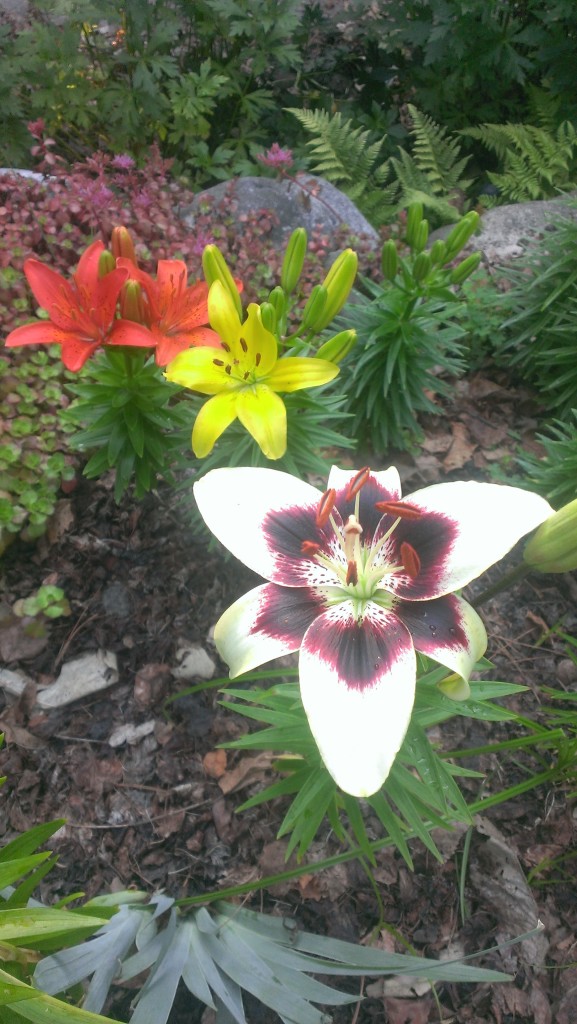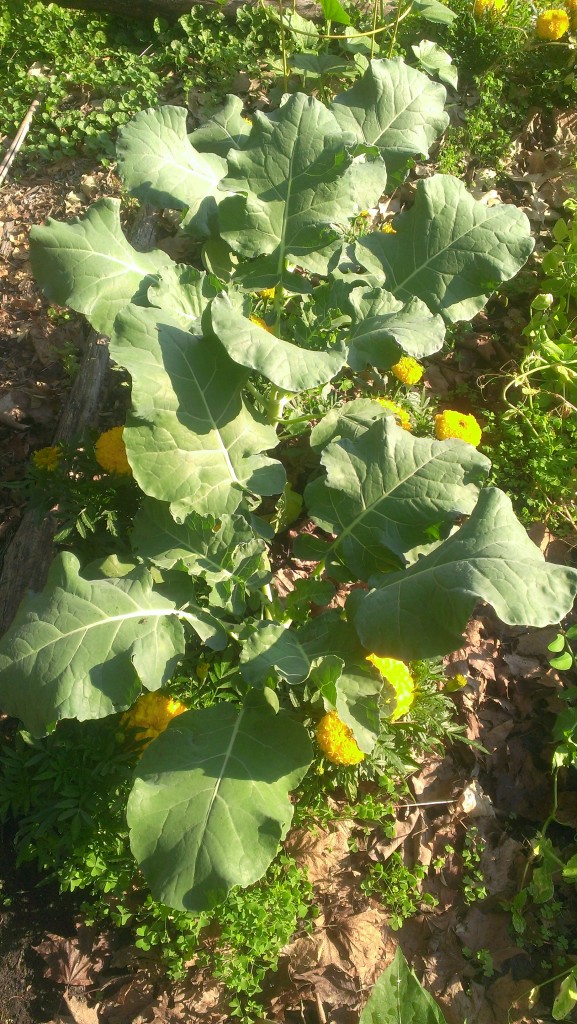Summer Moon of the First Harvests
A light rain falling as I went out this morning. The garden continues to look strong, the  tomatoes are about to enter their bearing and ripening phase, maybe a week, maybe a little more, then Kate will have the stove filled with canning and the counters with canning equipment. Later on the raspberries, which is a bulk harvest, too, and the leeks, even later, will also be a bulk harvest. Around the time the leeks are ready, the apples should begin to ripen.
tomatoes are about to enter their bearing and ripening phase, maybe a week, maybe a little more, then Kate will have the stove filled with canning and the counters with canning equipment. Later on the raspberries, which is a bulk harvest, too, and the leeks, even later, will also be a bulk harvest. Around the time the leeks are ready, the apples should begin to ripen.
I’m especially pleased with my new lilies from the Northstar Lily society: the dark purple, the trumpet of white with yellow, the cream colored vase shaped, bright yellows and pinks. Their colors are vibrant. They pulsate. Mid-July is my favorite flower season. Well, mid-July and early spring. I also love the spring ephemerals. The rest I enjoy, but these flowers make my flower growing season.
Sprayed again this morning, this one an oil based spray to strengthen the plants against insects. It does seem to be the case, with the exception of the beets and the cabbage that insect predation is down from years past. This has been such an odd year, especially compared to last year–hot and dry, that it’s a little hard to generalize. It does seem to be the case that stronger plants equal better insect control, by the plant.
While the Woollies were here, I commented on the amount of money we’ve put in the  outdoors. Initially, the landscaping by Otten Brothers. Then clearing the land for the vegetable and orchard areas. (cost here mostly stump grinding and renting the industrial strength wood-chipper.) The raised beds. Then the ecological gardens work with the orchard and some in the vegetable garden. Fences around the orchard and the vegetable garden and the whole property. Irrigation zones. The fire pit. Mulching the orchard and the vegetable garden. Bulbs in the fall for many years. We’re raising expensive tomatoes.
outdoors. Initially, the landscaping by Otten Brothers. Then clearing the land for the vegetable and orchard areas. (cost here mostly stump grinding and renting the industrial strength wood-chipper.) The raised beds. Then the ecological gardens work with the orchard and some in the vegetable garden. Fences around the orchard and the vegetable garden and the whole property. Irrigation zones. The fire pit. Mulching the orchard and the vegetable garden. Bulbs in the fall for many years. We’re raising expensive tomatoes.
But, this kind of accounting leaves out the most significant parts of all this work. It keeps us outside, using our bodies. The whole grounds are a joint effort, in work, planning, and hiring. It also allows us to produce a good part of our vegetables at quality we effect and flowers for our tables. Fruits, too.
Best of all it keeps us focused on the rhythms of the earth. Winter puts the garden to sleep and relieves us of its care (for the most part). Spring sees our fall bulb planting rewarded and our earliest vegetables planted. Summer finds us intensely involved with weeding, thinning, managing the various crops for the year. Fall finishes the harvest and brings senescence.
